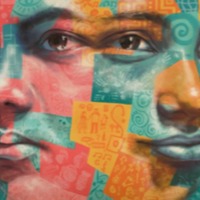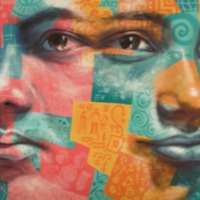
Ramesh
The Global Slavery Index 2018 estimates that on any given day there were nearly 8 million people living in modern slavery in India. While the bonded labour system is formally abolished and criminalised, recent research indicated that bonded labour is still prevalent in India. A 2016 report found that in the state of Tamil Nadu, 351 of 743 spinning mills used bonded labour schemes, otherwise known as Sumangali schemes. Similarly in granite quarries, wage advances and loans with an interest ranging from 24% to 36% are used to bond workers. Situations of debt bondage are often aggravated by the need to raise emergency funds or take on loans for health crises. Ramesh took a loan to pay for his wife’s medical treatment. Upon their return from the hospital, Ramesh and his family were forced to work long hours in a brick kiln to pay off the money they had borrowed. Ramesh and his family were finally able to escape their situation with the help of Schools4Freedom.

The Khans
The Global Slavery Index 2018 estimates than there are 749,000 people living in conditions of modern slavery in Afghanistan. Within the country men, women and children are exploited in bonded labour, where an initial debt assumed by a worker as part of the terms of employment is exploited, ultimately entrapping other family members and sometimes for multiple generations. Some entire Afghan families are trapped in debt bondage in the brick-making industry in the Easter part of the country. Zabit Khan and his family were living as refugees in Pakistan when he became ill and borrowed several thousand dollars from a kiln owner to cover his medical costs. He began working at the kiln but was not earning enough to pay off the debt. As his family grew, Zabit had to borrow more for food, medicine and other basic needs for his children. Seven years later an Afghan kiln owner bought the Khans’ debt and they began working for him back in Afghanistan. Khan, his wife and his 9 young children would spend 12 hours a day squatting in the dirt making line after line of clay bricks.

Ruhi
Entire families migrate every year from other states in India to find work in Punjab’s brick kilns. The survey data suggest that there are more than 18 million people or 1.4 percent of the total population, who are living in conditions of modern slavery in India. Industries implicated in survey data include domestic work, the construction and sex industries, agriculture, fishing, manufacturing, manual labour, and forced begging. Most of India’s slavery problem is internal, and those from the most disadvantaged social strata—lowest caste Dalits, members of tribal communities, religious minorities, and women and girls from excluded groups—are most vulnerable. Ruhi tells of how poverty, a lack of job opportunities and healthcare needs in Uttar Pradesh led her family to borrow money, and accept work from a broker of a brick kiln factory under the promise of Rs.8000 monthly, overtime pay and an advance. However, once her husband travelled to Silchar, her family was abused and the promises went unfulfilled.

Mohammed
It is estimated that there are over 2 million people are living in conditions of modern slavery in Pakistan. Debt bondage constitutes the most prevalent form of slavery, being found in industries such as brick making, agriculture, carpet weaving and fishing. Brick-kilns are located on the outskirts of most major towns and cities in Pakistan and operate almost exclusively on the basis of debt bondage. Male heads of families receive advances which bond them and their entire families to owners of brick-kilns. Once bonded, the laborers are forced to live and work at the brick-kiln site. While all members of the family are expected to work, the minimal wages paid are given only to the male head of the family. The pay structure is such that basic necessities are not covered by the wages, forcing workers to take out further loans and increase their debt. Mohammed and his family were searching for a source of income when they found work in a brick kiln. Though they did not take an advance, Mohammed was forced to take out a loan with the kiln owners in order to pay for expenses, leading him and his family to be trapped in debt bondage.

Trong
China remains a source, transit and destination country for men, women and children subject to forced labour. There have been a number of media reports exposing cases of forced labour in the country, especially among the disabled whose families are unable to care for them and with an underdeveloped government support system leaving them vulnerable. The disparity of work opportunities between rural and urban populations has created a high migrant population vulnerable to human trafficking. The lure of a higher income leads many migrant workers to accept jobs in China without knowing exactly what they entail. Trong went to China from Vietnam after his aunt told him he could get housework near the border. He was told he would work for a couple of months and then return home. However upon arrival he was told by other Vietnamese workers that he had been deceived. Trong had been enslaved into debt bondage in a brick kiln, forced to work to cover the costs of transportation and accommodation. Eventually Trong along with his friend Lin were able to escape.

Lin
China remains a source, transit and destination country for men, women and children subject to forced labour. There have been a number of media reports exposing cases of forced labour in the country, especially among the disabled whose families are unable to care for them and with an underdeveloped government support system leaving them vulnerable. The disparity of work opportunities between rural and urban populations has created a high migrant population vulnerable to human trafficking. The lure of a higher income leads many migrant workers to accept jobs in China without knowing exactly what they entail. Lin travelled to China with his friend Trong from Vietnam when he was told he could get housework near the border. He was told his travel expenses, food and accommodation would be taken care of and he would earn a good salary. However, upon arrival he found himself in debt bondage, forced to work long hours under the threat of violence in a brick kiln to pay off his incurred fees. Eventually Lin was able to escape along with his friend Trong, hiding out in a nearby forest to avoid discovery.

Sandeep
Sandeep was enslaved in a carpet loom in Uttar Pradesh. He was liberated by activists from Bal Vikas Ashram (BVA), an organization that liberates and rehabilitates child slaves. He was found weaving carpets, wearing only underwear, and had been forced to weave rugs for 12-15 hours a day, beginning at 6am. From BVA he received medical care, counseling, literacy training, and basic rights education.
More than 300,000 children are estimated to be trapped in India’s carpet industry in India, and there are also an estimated 500,000 children in the same industry in Pakistan. Most of India’s carpets are woven in Uttar Pradesh, where the majority of workers are low-caste Hindu boys. Some are lured into bondage by agents’ promises to their parents that they will receive good wages, and others are kidnapped. The boys are forced to work for no pay, for 10-18 hours a day, seven days a week. They are beaten, tortured, branded, kept half fed and half clad, and are usually made to sleep in the loom shed. Cuts and wounds are frequent.

Puspal
Puspal was a bonded labourer in a brick kiln in India. Entire families migrate every year from other states in India to find work in Punjab’s brick kilns. The survey data suggest that there are more than 18 million people or 1.4 percent of the total population, who are living in conditions of modern slavery in India. Industries implicated in survey data include domestic work, the construction and sex industries, agriculture, fishing, manufacturing, manual labour, and forced begging. Most of India’s slavery problem is internal, and those from the most disadvantaged social strata—lowest caste Dalits, members of tribal communities, religious minorities, and women and girls from excluded groups—are most vulnerable.
